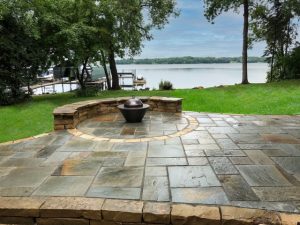For decades the long-standing contender for the ideal lawn grass was Kentucky bluegrass. Kentucky bluegrass has been the creme-de-la crop when it comes to a show-stopping landscape, primarily due to its rich and vibrant color. If you know a little something about different types of grass, you might be aware of a couple of other varieties of popular lawn grass: fescue and perennial ryegrass.
Fescues are a very low maintenance variety of grass and work best in shady lawns. Perennial ryegrass, however, has been labeled as a “nurse” grass due to its quick germination. There is much more to know about perennial ryegrass aside from its ability to germinate. Here are its pros and cons.
Benefits of Perennial Ryegrass
As mentioned above, perennial ryegrass germinates rapidly, approximately maturing from seed to grassy lawn within three weeks. It is typically blended with other variants – including Kentucky bluegrass – to help speed up the germination process and protect the grass during its growth.
Perennial ryegrass is very resilient and durable. It is as low maintenance as fescues and resistant to many diseases and wraths of insects. The color is paler compared to Kentucky bluegrass, but it still makes for a beautiful display. The turfs at the Master’s national golf club and the Wimbledon Tennis club use varieties of perennial ryegrass.
Possible Issues With Perennial Ryegrass
The most common problem with perennial ryegrass is its growth. It is common for this grass to grow in clumps, which can make it difficult to spread. This mean that although the grass is rapidly growing, the lawn can appear to be spotty and patchy and it will require extra maintenance to fill. To fix this it is advised to reseed the barren areas as it likely won’t fill in naturally. Unlike fescues, it is much better to plant perennial ryegrass in sunnier regions because it can have a difficult time growing in the shade.
The texture can be unpleasant for some and it can be difficult to mow with cheaper lawnmowers. Because the surface is much more coarse, when cutting with a dull mower the blade of the leaf will be shredded up, rather than cut down. Perennial ryegrass is vulnerable to cold temperatures, and it is not advised to plant in areas with harsh climates. That being said, it bodes well in transitional periods.
Taking Care of Perennial Ryegrass
Perennial ryegrass is not annual ryegrass. So if you’re looking to take care of your lawn, do not mix up the two species. Perennial ryegrass, as its name suggests, is a perennial. This means it will regrow every year. Annual ryegrass is a cheaper variety because its life is shorter and it will die out every year.
References:
Burke, K. (2019, January 30). You Should Consider Growing Your Own Perennial Ryegrass. Retrieved from https://www.thespruce.com/perennial-ryegrass-a-serious-lawn-contender-2153133.

